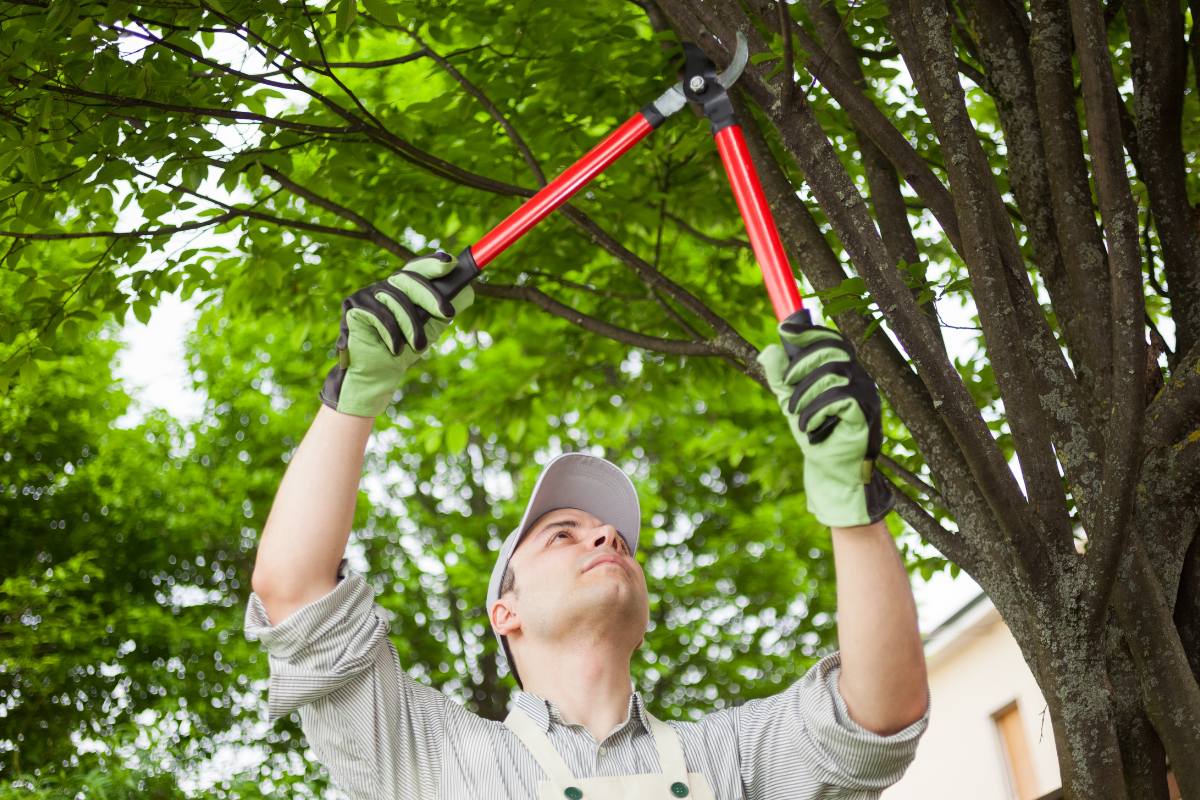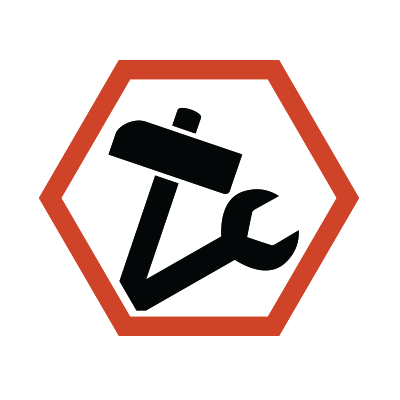Properly caring for your trees keeps them healthy and improves their aesthetics. From planting to pruning to using the right tools, it is essential to have basic DIY tree care skills to ensure you keep your trees healthy and safe at all times.
In this article, we’ll walk you through DIY tree care tips, covering essential pruning techniques, must-have tools, planting and care tips for new trees, and maintenance advice. By the end of this guide, you’ll have the knowledge and confidence to keep your trees healthy and thriving for years to come.
Tree Care and Maintenance Tips
Proper tree care and maintenance is key to ensuring the health and longevity of your tree. This includes proper mulching and soil care, inspecting for damage and disease, and controlling pests and diseases. To care for trees properly, it’s essential to follow these guidelines.
Mulching and Soil Care
Correct application of wood chip mulch is necessary for moisture conservation, soil temperature regulation, and weed suppression.
Mulch should be applied in a layer of one to two inches deep, with a three to five-inch clearance from the trunk, and spread out to the dripline or under the tips of the branches. This helps to prevent soil compaction and ensures that the tree’s roots receive the moisture and nutrients they need to thrive.
Rake and turn the mulch several times a year to keep it fresh and effective. Avoid using plastic or rubber mulch, as these materials can harm the tree and the surrounding environment.
Inspecting for Damage and Disease
Regularly inspect your trees for signs of damage, disease, or pest infestations, and address any issues promptly to maintain tree health and prevent further problems. Signs of damage and disease may include:
- Leaf discoloration or wilting
- Dead or dying branches
- Bark damage or peeling
- Fungal growth or mushrooms on the trunk or branches
- Insect infestations
- Visible signs of decay or rot in the wood
When you notice any of these issues, take swift action to address the problem, such as pruning dead or diseased branches, applying fungicides or insecticides, or providing additional nutrients or water to the tree.
In severe cases, contacting a professional arborist for assistance may be necessary. The arborist may also come in handy if you have other complex projects, such as tree stump removal or removing a dead or decaying tree.
Pest and Disease Control
Managing pests and diseases in your trees is key to maintaining their health and the overall wellness of your landscape. Integrated Pest Management (IPM) is an approach to pest control that combines biological, cultural, physical, and chemical methods to reduce pest populations and minimize the use of pesticides.
It’s also essential to provide your trees with adequate nutrition to deter pests and diseases. Employing a balanced fertilizer and avoiding over-fertilizing can help to keep your trees healthy and resistant to pests and diseases.
Planting and Caring for New Trees
Planting and caring for newly planted trees extends beyond simply digging a hole and watering. Maximizing your tree’s chances for a long, healthy life involves choosing the right tree for your location, applying correct planting techniques, and ensuring adequate water and nutrients.
Choosing the Right Tree
The first step in successful tree care is selecting the right tree and planting it in an appropriate location. This involves conducting research on tree species and considering factors like canopy size, soil conditions, and climate before planting.
Some trees may require specific soil conditions or be more susceptible to pests and diseases, so it’s important to choose a tree that is well-adapted to your area.
Proper Planting Techniques
Using proper planting techniques is crucial for ensuring the healthy growth of your new tree. Here are some steps to follow:
- When excavating a hole for your tree, create a wide and shallow hole, rather than a deep and narrow one, to promote better root growth.
- Prepare the planting area by removing any grass or weeds.
- Place the tree in the hole so that the root flare is level with or slightly above the ground.
Backfill the hole with a combination of soil and organic matter, such as compost or well-rotted manure, to provide the tree with essential nutrients. Properly planted trees will have a greater chance of developing strong root systems and staying healthy throughout their lives.
Watering and Fertilizer
Providing appropriate watering and fertilizing is essential for promoting strong root systems and overall tree health. Deep watering, which is deep, infrequent watering, encourages healthy root growth and helps prevent shallow root systems that are more susceptible to drought or extreme temperatures.
Applying slow-release fertilizer can also provide a consistent supply of nutrients to your tree over an extended period, avoiding the risk of over-fertilizing, which can harm the tree’s health.
Must-Have Tree Care Tools
Effective tree care goes beyond the knowledge of watering, pruning, and even fertilizing. It also involves having the right tools, including:
- Hand pruners
- Loppers
- Pole pruners
- Saws
These tools ensure clean and sharp cuts, which are vital for maintaining tree health and preventing damage from improper pruning.
Hand Pruners and Loppers
Hand pruners and loppers are essential tools for trimming small to medium-sized branches and promoting tree health. Each type has its own specific use, and it’s important to choose the right one for the job.
Hand pruners, also called secateurs, come in two types: anvil secateurs with one cutting blade that cuts against a fixed blade, and bypass secateurs with two sharp blades that cut with a scissor action.
On the other hand, lopping shears have handles that are longer than usual. This provides the muscle power to cut branches as much as 1.5 inches in diameter.
Pole Pruners and Saws
Pole pruners and saws are necessary tools for accessing higher branches and executing clean, accurate cuts.
Curved blade pruning saws are ideal for cutting smaller branches, while pole pruners are indispensable for accessing higher branches, which can be challenging or impossible to reach.
Pole pruners come in various lengths, typically around 8 feet, and can be equipped with different cutting heads to suit the specific needs of the task at hand.
Selecting the appropriate type of pole pruner or saw for the task is essential. Various lengths and cutting heads are available to suit different needs and preferences.
Tool Maintenance
Regular maintenance of tools is vital to prevent disease transmission among trees and ensure your tools remain effective and efficient. Proper care for your pruning tools includes:
- Cleaning
- Lubricating
- Sharpening
- Storing
- Inspecting
- Using them safely
Before using your pruning tools, ensure they are sharpened to make clean and precise cuts. Store your tools in a dry environment, away from direct sunlight, and in a location that is not accessible to children.
Essential Tree Pruning Techniques
Tree pruning significantly contributes to the form, strength, and longevity of a healthy tree, making it a key aspect of tree care. Not only does proper pruning maintain the aesthetics of your trees, but it also prevents potential hazards due to weakened structures.
However, improper pruning can cause deformity, weakened structural integrity, and decreased tree health, which may result in broken branches. You can avoid these issues by using the correct pruning tools and adhering to best practices for cutting branches, taking into consideration their size and location.
Pruning Dead and Diseased Branches
One of the most important aspects of tree pruning is the removal of dead and diseased branches. This promotes healthy growth and prevents the spread of disease to other parts of the tree or surrounding trees.
Cutting at a 45-degree angle just above a bud or branch collar encourages proper healing and avoids water pooling on the cut surface. Sterilizing your tools after every use is also a must to prevent disease transmission between branches or trees.
Pruning Young Trees
Promoting the development of a strong structure in young trees is a significant benefit of pruning, which will contribute to the tree’s health throughout its lifespan. The ideal time to begin training a newly-planted tree is during the dormant season following planting.
When pruning younger trees, it’s important to consider the long-term growth and development of the tree. For instance, leaving lower branches on the trunk for a few years can help the trunk develop the appropriate taper and strength. As the tree matures, these lower branches can be removed to maintain the desired shape and structure.
Seasonal Pruning Guidelines
The optimal time for pruning a tree depends on its species, but general guidelines suggest:
- Dormant pruning in winter, which encourages vigorous regrowth in the spring
- Summer pruning, which is beneficial for controlling or slowing a tree’s or branches’ growth
- For spring-flowering trees and shrubs, it’s best to prune immediately after flowering
- Trees that bloom during summer and autumn should have their pruning done in late winter or early spring, to ensure that they get the best of their annual growth.
Avoid pruning trees in the fall since it can slow down the tree’s healing process and increase the spread of decaying fungi spores. Also, except for newly planted trees, pruning is not recommended during the summer.
When to Call a Professional Arborist
Recognizing when to engage a professional arborist is vital for maintaining tree health and safety, particularly in hazardous situations or when faced with large or complex pruning tasks. Attempting DIY tree pruning can be dangerous and risks causing damage to your trees or even personal injury.
Conclusion
Proper tree care involves a combination of essential pruning techniques, the right tools, planting and care for new trees, and regular maintenance. By following the advice and tips shared in this guide, you’ll be well-equipped to create a beautiful, thriving landscape filled with healthy trees. Remember, when in doubt or facing hazardous situations, don’t hesitate to call a professional arborist to ensure the safety and well-being of both you and your trees.







Leave a Reply